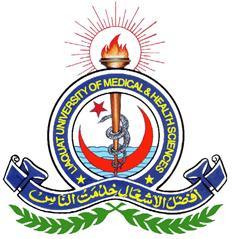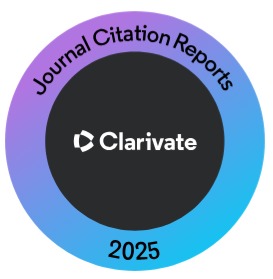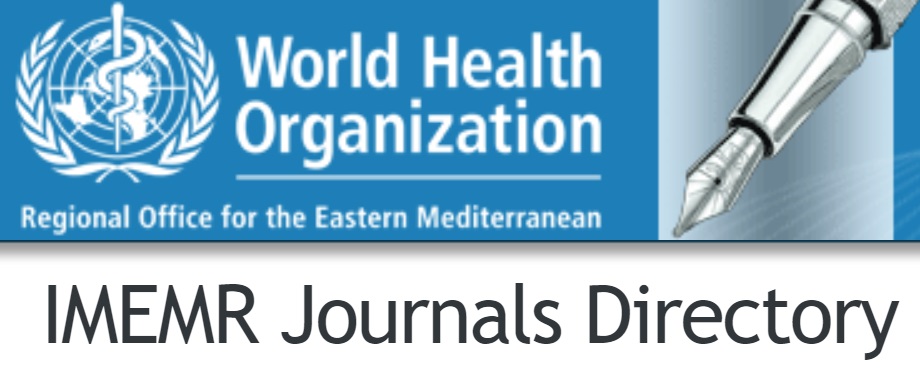Nurses' Knowledge, Attitude, and Practice toward Immobility Complications: A Scoping Review
Keywords:
Attitudes, Deep vein thrombosis, Immobility complications, Knowledge, Nurses, Practice, Pressure injury, Urinary tract infectionAbstract
Immobility complications are challenging for healthcare professionals because they negatively affect individuals' overall health. Following recovery from a severe illness or accident, patients' movement is often impaired, so they may be unable to perform activities of daily living, thus impacting their quality of life. Nurses play a proactive role in preventing immobility's physical and mental impacts. However, several studies have suggested that nurses worldwide lack knowledge, attitude, and practice (KAP) toward immobility complications. Therefore, stakeholders must prioritize this problem to optimize healthcare provision. Accordingly, this study aimed to explore nurses' KAP toward immobility complications. A scoping review of relevant articles utilized PubMed, Scopus, Cochrane, Web of Science, Embase, CINAHL Plus, and EBSCOhost databases. Hawker's tool assessed the risk of bias among the included primary articles. The results were analyzed according to the KAP toward four main immobility complications: pressure injury, deep vein thrombosis, ventilator-associated pneumonia, and urinary tract infection. The database search generated a total of 1398 articles. Of them, only 39 articles met the inclusion criteria for the review. Most articles concluded that nurses' KAP were below the expected level. Education and training were found to optimize nurses' KAP. The KAP toward immobility complications was good among nurses with work experience, high academic grades, and prior training. These findings indicate that nursing staff should receive continuous education and in-service training to improve their KAP toward immobility complications.
References
de Andrade-Junior MC, de Salles ICD, de Brito CMM, Pastore-Junior L, Righetti RF, Yamaguti WP. Skeletal muscle wasting and function impairment in intensive care patients with severe COVID-19. Front Physiol. 2021; 12: 640973. doi: 10.3389/fphys.2021.640973.
Kulik LA, Hasbani NR, Stellar JJ, Quigley SM, Shelley SS, Wypij D et al. Hospital-acquired pressure injuries in children with congenital heart disease: prevalence and associated factors. Pediatr Crit Care Med. 2019; 20: 1048–56. doi: 10.1097/PCC.0000000000002077.
Weinel LM, Summers MJ, Chapple L-A. Ultrasonography to measure quadriceps muscle in critically ill patients: a literature review of reported methodologies. Anaesth Intensive Care. 2019; 47: 423–34. doi: 10.1177/0310057X19875152.
Gruther W, Pieber K, Steiner I, Hein C, Hiesmayr JM, Paternostro-Sluga T. Can Early Rehabilitation on the General Ward After an Intensive Care Unit Stay Reduce Hospital Length of Stay in Survivors of Critical Illness?: A Randomized Controlled Trial. Am J Phys Med Rehabil. 2017; 96: 607-15. doi: 10.1097/PHM.0000000000000718.
Tipping CJ, Harrold M, Holland A, Romero L, Nisbet T, Hodgson CL. The effects of active mobilization and rehabilitation in ICU on mortality and function: a systematic review. Intensive Care Med. 2017; 43: 171–83. doi: 10.1007/s00134-016-4612-0.
Dube A, Sidambe V, Verdon A, Phillips E, Jones S, Lintern M et al. Risk factors associated with heel pressure ulcer development in adult population: A systematic literature review. J Tissue Viability. 2022; 31: 84–103. doi: 10.1016/j.jtv.2021.10.007.
Fernando SM, Tran A, Cheng W, Sadeghirad B, Arabi YM, Cook DJ et al. VTE Prophylaxis in Critically Ill Adults: A Systematic Review and Network Meta-analysis. Chest. 2022; 161: 418–28. doi: 10.1016/j.chest.2021.08.050.
Cillóniz C, Torres A, Niederman MS. Management of pneumonia in critically ill patients. BMJ. 2021; 375: e065871. doi: 10.1136/bmj-2021-065871.
Van Decker SG, Bosch N, Murphy J. Catheter-associated urinary tract infection reduction in critical care units: a bundled care model. BMJ Open Qual. 2021; 10: e001534. doi: 10.1136/bmjoq-2021-001534.
de Brito CMM, Battistella LR, Guarita MLC. Challenges and Complications of Immobility. In: Anghinah R, Paiva W, Battistella LR, Amorim R, editors. Top. Cogn. Rehabil. TBI Post-Hosp. Phase, Cham: Springer International Publishing; 2018, p. 25–33. doi: 10.1007/978-3-319-95376-2_4./10.1007/978-3-319-95376-2_4.
Marusic U, Kavcic V, Pisot R, Goswami N. The Role of Enhanced Cognition to Counteract Detrimental Effects of Prolonged Bed Rest: Current Evidence and Perspectives. Front Physiol. 2018; 9: 1864. doi: 10.3389/fphys.2018.01864.
Hung H-Y, Su P-F, Wu M-H, Chang Y-J. Status and related factors of depression, perceived stress, and distress of women at home rest with threatened preterm labor and women with healthy pregnancy in Taiwan. J Affect Disord. 2021; 280: 156–66. doi: 10.1016/j.jad.2020.10.062.
Chen J, Wang X, Qian H, Ye J, Qian J, Hua J. Correlation between common postoperative complications of prolonged bed rest and quality of life in hospitalized elderly hip fracture patients. Ann Palliat Med. 2020; 9: 1125–33. doi: 10.21037/apm-20-891.
Wu X, Li Z, Cao J, Jiao J, Wang Y, Liu G et al. The association between major complications of immobility during hospitalization and quality of life among bedridden patients: A 3 month prospective multi-center study. PLoS ONE. 2018 Oct 12; 13(10): e0205729. doi: 10.1371/journal.pone.0205729.
Harfmann EJ, deRoon-Cassini TA, McCrea MA, Nader AM, Nelson LD. Comparison of Four Quality of Life Inventories for Patients with Traumatic Brain Injuries and Orthopedic Injuries. J Neurotrauma. 2020 Jun 15; 37(12): 1408–17. doi: 10.1089/neu.2019.6746.
Chuang LH, Cohen AT, Agnelli G, Gumbs PD, Bauersachs R, Kroep S et al. Comparison of quality of life measurements: EQ-5D-5L versus disease/treatment-specific measures in pulmonary embolism and deep vein thrombosis. Qual Life Res Int J Qual Life Asp Treat Care Rehabil. 2019 May; 28(5): 1155–77. doi: 10.1007/s11136-018-2081-3.
Medina M, Castillo-Pino E. An introduction to the epidemiology and burden of urinary tract infections. Ther Adv Urol. 2019 Dec; 11: 1756287219832172. doi: 10.1177/1756287219832172.
Latronico N, Bolton CF. Critical illness polyneuropathy and myopathy: a major cause of muscle weakness and paralysis. Lancet Neurol. 2011 Oct; 10(10): 931–41. doi: 10.1016/s1474-4422(11)70178-8.
Núñez-Seisdedos MN, Lázaro-Navas I, López-González L, López-Aguilera L. Intensive Care Unit- Acquired Weakness and Hospital Functional Mobility Outcomes Following Invasive Mechanical Ventilation in Patients with COVID-19: A Single-Centre Prospective Cohort Study. J Intensive Care Med. 2022 May 16; 8850666221100498. doi: 10.1177/08850666221100498.
Stolldorf DP, Dietrich MS, Chidume T, McIntosh M, Maxwell CA. Nurse-Initiated Mobilization Practices in 2 Community Intensive Care Units: A Pilot Study. Dimens Crit Care Nurs DCCN. 2018; 37: 318–23. doi: 10.1097/DCC.0000000000000320.
Boling B, Dennis DR, Tribble TA, Rajagopalan N, Hoopes CW. Safety of Nurse-Led Ambulation for Patients on Venovenous Extracorporeal Membrane Oxygenation. Prog Transplant Aliso Viejo Calif. 2016; 26: 112–6. doi: 10.1177/1526924816640646.
Slawomirski L, Auraaen A, Klazinga NS. The economics of patient safety: The economics of patient safety: Strengthening a value-based approach to reducing patient harm at national level 2018. Available from: https://www.bundesgesundheitsministerium.de/fileadmin/Dateien/3_Downloads/P/Patientensicherheit/The_Economics_of_patient_safety_Web.pdf
Hu L, Sae-Sia W, Kitrungrote L. Intensive Care Nurses' Knowledge, Attitude, and Practice of Pressure Injury Prevention in China: A Cross-Sectional Study. Risk Manag Healthc Policy. 2021; 14: 4257–67. doi: 10.2147/RMHP.S323839.
Li Z, Marshall AP, Lin F, Ding Y, Chaboyer W. Knowledge of pressure injury in medical and surgical nurses in a tertiary level hospital: A cross-sectional study. J Tissue Viability. 2022; 31: 24–9. doi: 10.1016/j.jtv.2021.12.003.
Li Z, Zhou X, Cao J, Li Z, Wan X, Li J et al. Nurses' knowledge and attitudes regarding major immobility complications among bedridden patients: A prospective multi-centre study. J Clin Nurs. 2018; 27: 1969–80. doi: 10.1111/jocn.14339.
Al-Mugheed KA, Bayraktar N. Knowledge and practices of nurses on deep vein thrombosis risks and prophylaxis: A descriptive cross sectional study. J Vasc Nurs. 2018; 36: 71–80. doi: 10.1016/j.jvn.2018.02.001.
Mong I, Ramoo V, Ponnampalavanar S, Chong MC, Wan Nawawi WNF. Knowledge, attitude and practice in relation to catheter?associated urinary tract infection (CAUTI) prevention: A cross?sectional study. J Clin Nurs. 2022; 31: 209–19. doi: 10.1111/jocn.15899.
Barakat-Johnson M, Barnett C, Wand T, White K. Knowledge and Attitudes of Nurses Toward Pressure Injury Prevention: A Cross-Sectional Multisite Study. J Wound Ostomy Cont Nurs Off Publ Wound Ostomy Cont Nurses Soc. 2018; 45: 233–7. doi: 10.1097/WON.0000000000000430.
Jackson D, Hutchinson M, Barnason S, Li W, Mannix J, Neville S et al. Towards international consensus on patient harm: perspectives on pressure injury policy. J Nurs Manag. 2016; 24: 902–14. doi: 10.1111/jonm.12396.
Colquhoun HL, Levac D, O'Brien KK, Straus S, Tricco AC, Perrier L et al. Scoping reviews: time for clarity in definition, methods, and reporting. J Clin Epidemiol. 2014; 67: 1291–4. doi: 10.1016/j.jclinepi.2014.03.013.
Arksey H, O'Malley L. Scoping studies: towards a methodological framework. Int J Soc Res Methodol. 2005; 8: 19–32. doi: 10.1080/1364557032000119616.
Hawker S, Payne S, Kerr C, Hardey M, Powell J. Appraising the evidence: reviewing disparate data systematically. Qual Health Res. 2002; 12(9): 1284–99.
Tricco AC, Lillie E, Zarin W, O'Brien KK, Colquhoun H, Levac D et al. PRISMA Extension for Scoping Reviews (PRISMA-ScR): Checklist and Explanation. Ann Intern. Med 2018; 169: 467–73. doi: 10.7326/M18-0850.
Cebeci F, ?enol Çelik S. Knowledge and practices of operating room nurses in the prevention of pressure injuries. J Tissue Viability. 2022; 31: 38–45. doi: 10.1016/j.jtv.2021.07.007.
Getahun AB, Belsti Y, Getnet M, Bitew DA, Gela YY, Belay DG et al. Knowledge of intensive care nurses' towards prevention of ventilator-associated pneumonia in North West Ethiopia referral hospitals, 2021: A multicenter, cross-sectional study. Ann Med Surg. 2022; 78: 103895. doi: 10.1016/j.amsu.2022.103895.
Huang S, Saensom D. Factors Associated with Nurses' Perceived Competence in Pressure Injury Care in a Tertiary Hospital in Yunnan, China. Adv Skin Wound Care. 2022; 35. doi: 10.1097/01.ASW.0000834456.88566.4b.
John J, Srivastava S. A Study to Assess the Knowledge and Practice of Nurses on Prevention of Ventilator Associated Pneumonia (VAP), and to Seek Its Relationship with the Selected Factors at Selected Hospitals of Delhi and NCR. Int J Nurs Care. 2022; 10:9–15. doi: 10.37506/ijonc.v10i1.17823.
Niyongabo E, Gasaba E, Niyonsenga P, Ndayizeye M, Ninezereza JB, Nsabimana D et al. Nurses' Knowledge, Attitudes and Practice regarding Pressure Ulcers Prevention and Treatment. Open J Nurs. 2022; 12: 316–33. doi: 10.4236/ojn.2022.125022.
Parisod H, Holopainen A, Kielo-Viljamaa E, Puukka P, Beeckman D, Haavisto E. Attitudes of nursing staff towards pressure ulcer prevention in primary and specialized health care: A correlational cross-sectional study. Int Wound J. 2022; 19: 399–410. doi: 10.1111/iwj.13641.
Yohannes S, Abebe T, Endalkachew K, Endeshaw D. Nurses' Knowledge, Perceived Practice, and their Associated Factors regarding Deep Venous Thrombosis (DVT) Prevention in Amhara Region Comprehensive Specialized Hospitals, Northwest Ethiopia, 2021: A Cross-Sectional Study. Crit Care Res Pract. 2022: 1–9. doi: 10.1155/2022/7386597.
Asfaw M, Wordofa B, Ayalew Y, Habte T. Knowledge, attitude and practice of nurses towards major immobility complications and its associated factors at governmental hospitals in Addis Ababa, Ethiopia: A cross-sectional study. Int J Afr Nurs Sci. 2021; 15: 100353. doi: 10.1016/j.ijans.2021.100353.
Grešš Halász B, Bérešová A, Tká?ová ?, Magurová D, Lizáková ?. Nurses' Knowledge and Attitudes towards Prevention of Pressure Ulcers. Int J Environ Res Public Health. 2021; 18: 1705. doi: 10.3390/ijerph18041705.
Sari SP, Everink IH, Amir Y, Lohrmann C, Halfens RJ, Moore Z et al. Knowledge and Attitude of Community Nurses on Pressure Injury Prevention: A Cross-sectional Study in an Indonesian City. Int Wound J. 2021;.18: 422–31. doi: 10.1111/iwj.13527.
Wang Y, Wu X-J, Ma Y-F, Xu Y, Wang X-J, Zhu C et al. Chinese orthopaedic nurses' knowledge, attitude and venous thromboembolic prophylactic practices: A multicentric cross-sectional survey. J Clin Nurs. 2021; 30: 773–82. doi: 10.1111/jocn.15615.
Awad WHA, Hewi SAH. Effect of pressure ulcer preventive nursing interventions on knowledge, attitudes and practices of nurses among hospitalized geriatric patients in Alexandria, Egypt. J Nurs Health Sci. 2020; 9: 01–12. doi: 10.9790/1959-0902060112.
Aysegul C, Oznur UY, Asiye A. Evidence-Based Practices for Preventing Ventilator-Associated Pneumonia in Intensive Care Nursing: Knowledge and Practice. Int J Caring Sci. 2020; 13: 1794–8.
Berihu H, Wubayehu T, Teklu T, Zeru T, Gerensea H. Practice on pressure ulcer prevention among nurses in selected public hospitals, Tigray, Ethiopia. BMC Res Notes. 2020;.13:.207. doi: 10.1186/s13104-020-05049-7.
Kalyan G, Bibi R, Kaur R, Bhatti R, Kumari R, Rana R et al. Knowledge and Practices of Intensive Care Unit Nurses Related to Prevention of Ventilator Associated Pneumonia in Selected Intensive Care Units of a Tertiary Care Centre, India. Iran J Nurs Midwifery Res. 2020; 25: 369–75. doi: 10.4103/ijnmr.IJNMR_128_18.
Wangmo K, Dema T, Pemo T, Dema T, Dorji P, Yangzom. A cross-sectional study on knowledge, attitude and practice on pressure ulcer among nurses in Jigme Dorji Wangchuk National Referral Hospital (JDWNRH). Int J Nurs Care. 2020; 8: 15–20.
Khojastehfar S, Najafi Ghezeljeh T, Haghani S. Factors related to knowledge, attitude, and practice of nurses in intensive care unit in the area of pressure ulcer prevention: A multicenter study. J Tissue Viability. 2020; 29: 76–81. doi: 10.1016/j.jtv.2020.02.002.
Khong BPC, Goh BC, Phang LY, David T. Operating room nurses' self-reported knowledge and attitude on perioperative pressure injury. Int Wound J. 2020; 17: 455–65. doi: 10.1111/iwj.13295.
Olorunfemi O, Osunde N, Akhigbe J. Knowledge and practice of pressure injury prevention and treatment among nurses in the University of Benin Teaching Hospital, Benin City, Nigeria, 2019. J Nurs MIDWIFERY Sci. 2020; 7: 194–9. doi: 10.4103/JNMS.JNMS_11_20.
Rafiei H, Rahimi S, Shafaei M, Ommatmohammadi M. Emergency nurses' knowledge about ventilator-associated pneumonia. Int Emerg Nurs. 2020; 48: 100783. doi: 10.1016/j.ienj.2019.06.006.
Charalambous C, Koulouri A, Roupa Z, Vasilopoulos A, Kyriakou M, Vasiliou M. Knowledge and attitudes of nurses in a major public hospital in Cyprus towards pressure ulcer prevention. J Tissue Viability. 2019; 28: 40–5. doi: 10.1016/j.jtv.2018.10.005.
Dawa T, Randolph M, Moyers P, Guthrie PF, Frie B, Filer D. Rehabilitation Nurses' Knowledge, Attitudes, and Behaviors for Preventing Urinary Tract Infections From Intermittent Catheterization. Rehabil Nurs. 2019; 44: 171. doi: 10.1097/rnj.0000000000000125.
De Meyer D, Verhaeghe S, Van Hecke A, Beeckman D. Knowledge of nurses and nursing assistants about pressure ulcer prevention: A survey in 16 Belgian hospitals using the PUKAT 2.0 tool. J Tissue Viability. 2019; 28: 59–69. doi: 10.1016/j.jtv.2019.03.002.
Dumbre DU. A Study to Assess the Knowledge and Compliance of Critical Care Nurses Regarding Ventilator Care Bundle in Prevention of Ventilator Associated Pneumonia. Medico-Leg Update. 2019; 19: 176–8. doi: 10.5958/0974-1283.2019.00035.5.
Ebi WE, Hirko GF, Mijena DA. Nurses' knowledge to pressure ulcer prevention in public hospitals in Wollega: a cross-sectional study design. BMC Nurs. 2019; 18: 20. doi: 10.1186/s12912-019-0346-y.
Kim JY, Lee YJ. A study on the nursing knowledge, attitude, and performance towards pressure ulcer prevention among nurses in Korea long-term care facilities. Int Wound J. 2019; 16 Suppl 1: 29–35. doi: 10.1111/iwj.13021.
Saleh M, Papanikolaou P, Nassar O, Shahin A, Anthony D. Nurses' knowledge and practice of pressure ulcer prevention and treatment: An observational study. J Tissue Viability. 2019; 28: 210–7. doi: 10.1016/j.jtv.2019.10.005.
Yilmazer T, Tüzer H, Erciyas A. Knowledge and attitudes towards prevention of pressure ulcer: intensive care units sample in Turkey. Turk Klin J Nurs Sci. 2019; 11. doi: 10.5336/nurses.2018-63157.
Habiballah L. Attitudes of intensive care nurses towards pressure ulcer prevention. Clin Nurs Stud. 2018; 6: 1. doi: 10.5430/cns.v6n3p1.
Hamdan AB, Javison S, Tamani J, Sashidharan S, Yahya OA, Hamoudi B. Oncology Nurses' Beliefs, Attitudes, Perceived Barriers towards Pressure Ulcer Prevention. J Health Educ Res Dev. 2018; 06. doi: 10.4172/2380-5439.1000278.
Tirgari B, Mirshekari L, Forouzi MA. Pressure injury prevention: knowledge and attitudes of Iranian intensive care nurses. Adv Skin Wound Care. 2018; 31: 1–8. doi: 10.1097/01.ASW.0000530848.50085.ef.
Tallier PC, Reineke PR, Asadoorian K, Choonoo JG, Campo M, Malmgreen-Wallen C. Perioperative registered nurses knowledge, attitudes, behaviors, and barriers regarding pressure ulcer prevention in perioperative patients. Appl Nurs Res ANR. 2017; 36: 106–10. doi: 10.1016/j.apnr.2017.06.009.
Ünver S, F?nd?k ÜY, Özkan ZK, Sürücü Ç. Attitudes of surgical nurses towards pressure ulcer prevention. J Tissue Viability. 2017; 26: 277–81. doi: 10.1016/j.jtv.2017.09.001.
de Camargo L, da Silva SN, Chambrone L. Efficacy of toothbrushing procedures performed in intensive care units in reducing the risk of ventilator-associated pneumonia: A systematic review. J Periodontal Res. 2019; 54: 601–11. doi: 10.1111/jre.12668.
Kao C-C, Chiang H-T, Chen C-Y, Hung C-T, Chen Y-C, Su L-H et al. National bundle care program implementation to reduce ventilator-associated pneumonia in intensive care units in Taiwan. J Microbiol Immunol Infect Wei Mian Yu Gan Ran Za Zhi. 2019; 52: 592–7. doi: 10.1016/j.jmii.2017.11.001.
Mahmoodpoor A, Sanaie S, Parthvi R, Shadvar K, Hamishekar H, Iranpour A et al. A clinical trial of silver-coated and tapered cuff plus supraglottic suctioning endotracheal tubes in preventing ventilator-associated pneumonia. J Crit Care. 2020; 56: 171–6. doi: 10.1016/j.jcrc.2019.12.024.
Abad CL, Formalejo CP, Mantaring DML. Assessment of knowledge and implementation practices of the ventilator acquired pneumonia (VAP) bundle in the intensive care unit of a private hospital. Antimicrob Resist Infect Control. 2021; 10: 161. doi: 10.1186/s13756-021-01027-1.
Eskandari F, Abdullah KL, Zainal NZ, Wong LP. The effect of educational intervention on nurses' knowledge, attitude, intention, practice and incidence rate of physical restraint use. Nurse Educ Pract. 2018; 32: 52–7. doi: 10.1016/j.nepr.2018.07.007.
Ursava? FE, ??eri Ö. Effects of education about prevention of pressure ulcer on knowledge and attitudes of nursing students. J Tissue Viability. 2020; 29: 331–6. doi: 10.1016/j.jtv.2020.06.006.
Karimian M, Khalighi E, Salimi E, Borji M, Tarjoman A, Mahmoudi Y. The effect of educational intervention on the knowledge and attitude of intensive care nurses in the prevention of pressure ulcers. Int J Risk Saf Med. 2020; 31: 89–95. doi: 10.3233/JRS-191038.
Downloads
Published
How to Cite
Issue
Section
License
Copyright (c) 2024 Journal of Liaquat University of Medical & Health Sciences

This work is licensed under a Creative Commons Attribution-NonCommercial-ShareAlike 4.0 International License.
Submission of a manuscript to the journal implies that all authors have read and agreed to the content of the undertaking form or the Terms and Conditions.
When an article is accepted for publication, the author(s) retain the copyright and are required to grant the publisher the right of first publication and other non-exclusive publishing rights to JLUMHS.
Articles published in the Journal of Liaquat University of Medical & health sciences are open access articles under a Creative Commons Attribution-Noncommercial - Share Alike 4.0 License. This license permits use, distribution and reproduction in any medium; provided the original work is properly cited and initial publication in this journal. This is in accordance with the BOAI definition of open access. In addition to that users are allowed to remix, tweak and build upon the work non-commercially as long as appropriate credit is given and the new creations are licensed under the identical terms. Or, in certain cases it can be stated that all articles and content there in are published under creative commons license unless stated otherwise.























